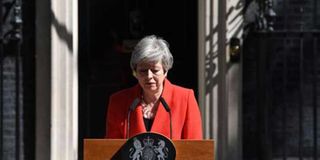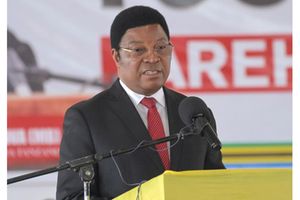Where Theresa May went wrong

London. Brexit was never going to be easy but Prime Minister Theresa May has been accused of some clear mistakes in her failed attempt to lead Britain out of the EU.
- Moving too soon -
After taking office in July 2016, a few weeks after the Brexit referendum vote, May was under intense pressure to begin withdrawal negotiations with the European Union.
But in retrospect, triggering the two-year Article 50 process in March 2017 without a clear strategy backed by members of her own cabinet proved disastrous.
It meant that Britain now had a hard deadline to agree a divorce deal with the EU or crash out on March 29, 2019.
Despite arguing for many months that "no deal was better than a bad deal", May was forced to delay Brexit to avoid a potentially damaging, disorderly split.
- Snap election -
May inherited only a small majority in parliament's lower House of Commons, which would have made her vulnerable to rebellions in pushing Brexit through.
After triggering Article 50, her Conservatives were riding high in opinion polls and she decided to consolidate her position by calling a snap election in June 2017.
But her own stilted performance was disastrous, the campaign was hit by policy issues and Labour opposition leader Jeremy Corbyn drew huge crowds with his anti-austerity message.
The Conservatives lost their majority and May was forced into an alliance with Northern Ireland's Democratic Unionist Party, hardline Brexit supporters.
Their partnership gradually unravelled, leaving May with insufficient support to push her plan through parliament.
- Negotiating strategy -
With the clock ticking and Britain keen to make a deal, many commentators believe the EU had the upper hand in negotiations from the beginning.
But May was also accused of boxing herself in by setting out her red lines early, pledging to leave the EU's single market and customs union.
She was later forced to backtrack, notably by agreeing to the "backstop" plan to keep Britain in the customs union and so avoid border checks between Northern Ireland and EU member Ireland.
This backstop was the cause of much of the opposition to the deal among MPs and especially from the DUP.
- Lack of bridge-building -
Despite the close result in the referendum -- voters backed Brexit by 52 to 48 percent -- May is accused of doing little to try to unite Britons.
Only after her plan had been defeated three times in parliament did she reach out to Labour, which by then had no incentive to strike a deal.
Her decision to adopt the vision and rhetoric of Brexit endorsed by hardliners alienated pro-Europeans and moderates, including in her own Conservative ranks.
When the Brexiteers refused to back her, she was left isolated.
- Communication issues -
May took office after six years as interior minister, one of the toughest jobs in British politics, and supporters hailed her as a safe pair of hands after the tumult of the referendum.
But she lacked the easy charm of her predecessor David Cameron and was awkward in public, with colleagues and world leaders.
Her wooden performance on the campaign trail was blamed for the disastrous 2017 election result, earning her the nickname "Maybot" in the media.
The secretive way she and her team prepared for the Brexit negotiations also riled many lawmakers, while many of those close to her complained she was inscrutable.
What had been hailed as her determination early in the process became viewed as a refusal to listen, a kind of tunnel vision that stopped her seeing the inevitable defeat ahead.




